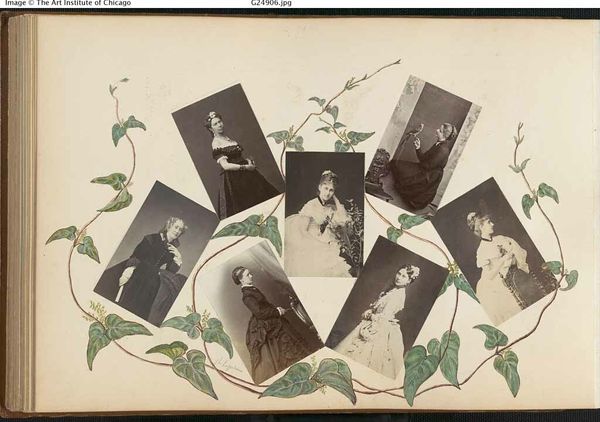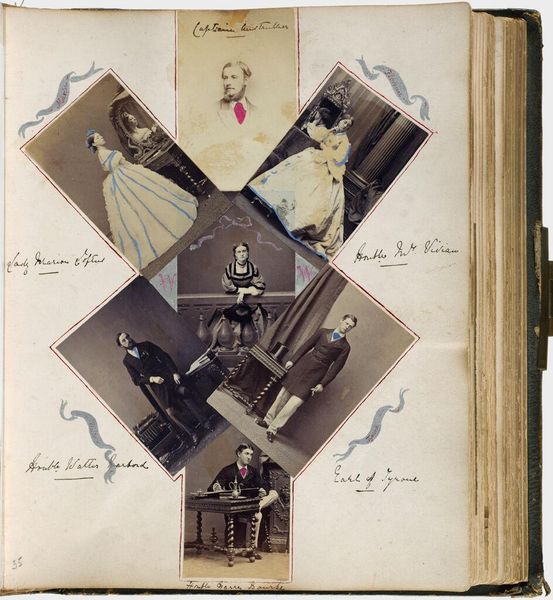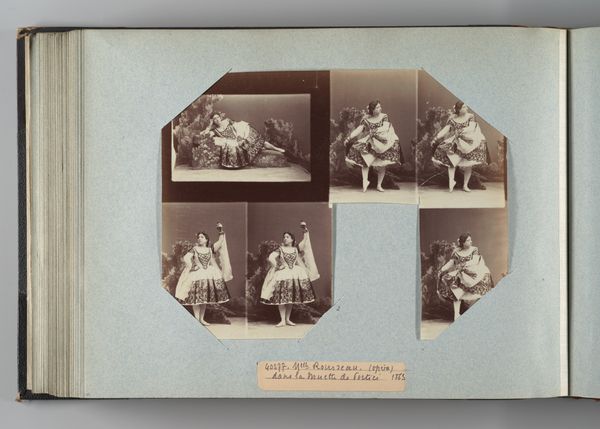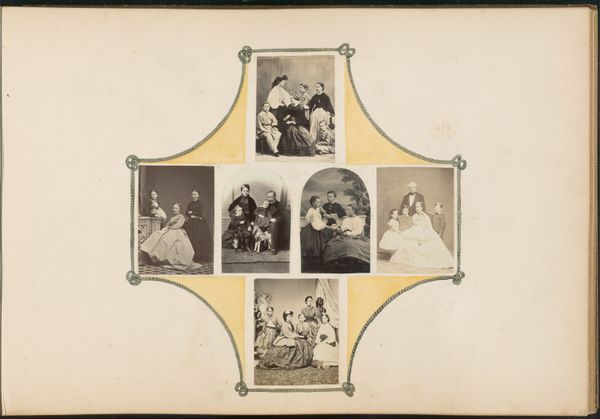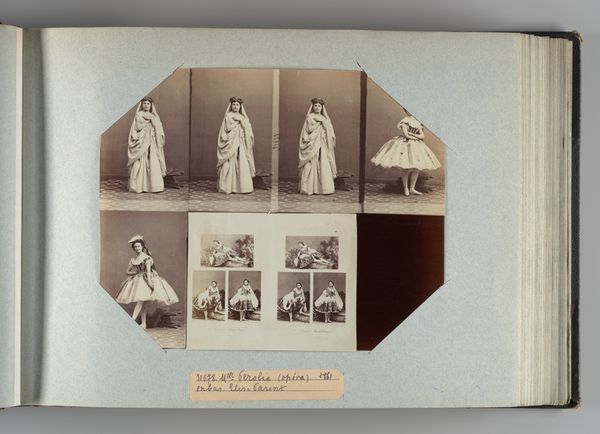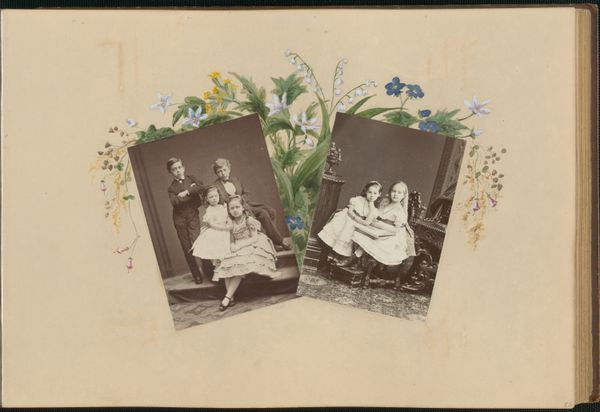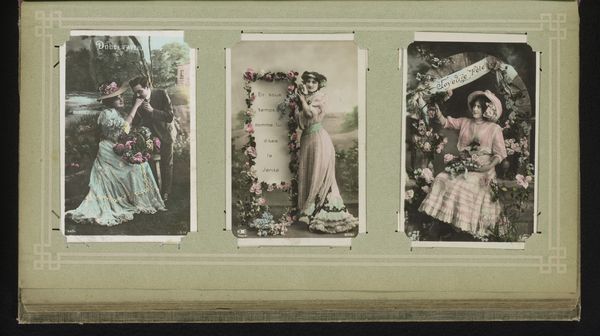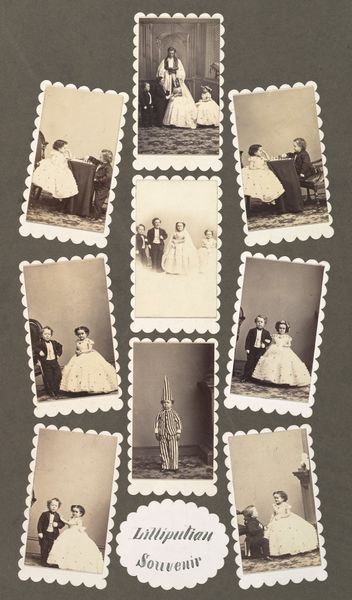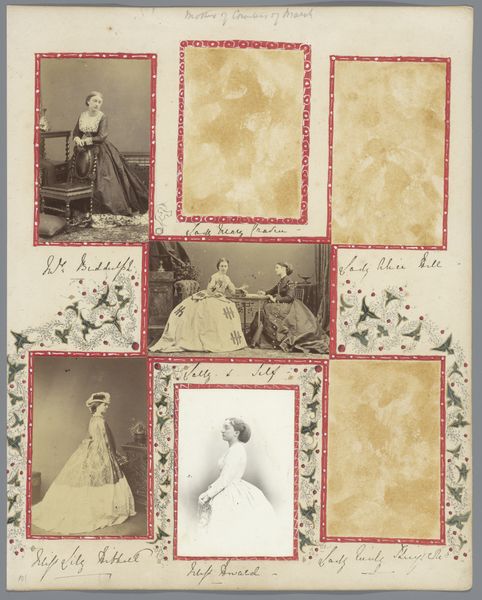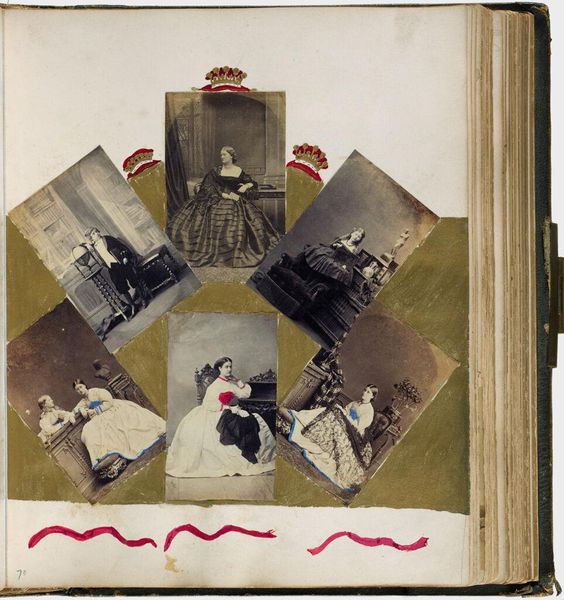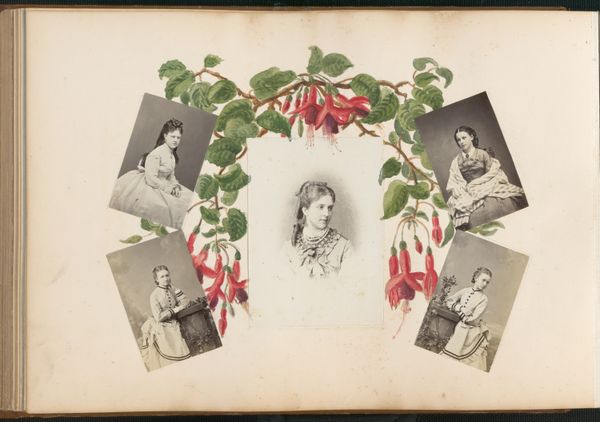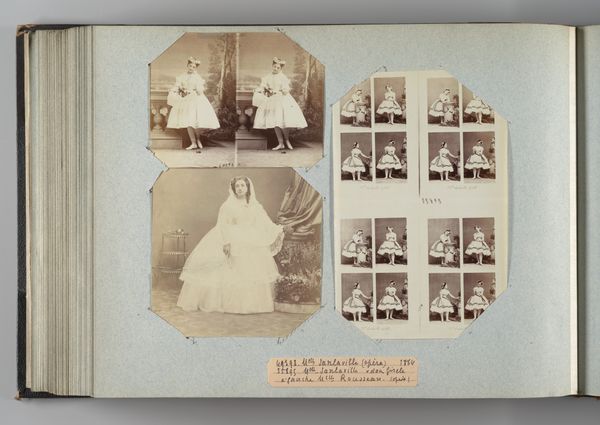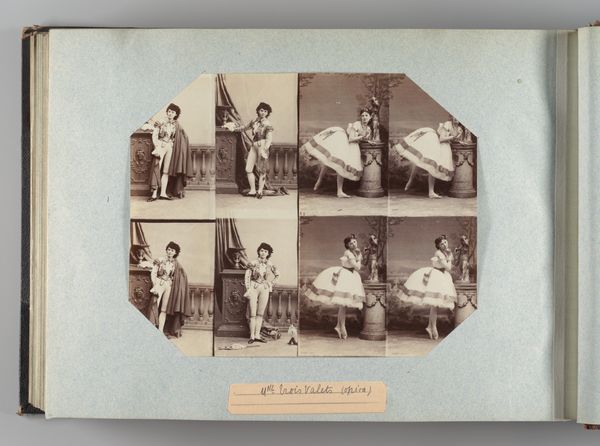
Dimensions: 29.2 × 41.9 cm
Copyright: Public Domain
Curator: This is an image of "The Madame B Album," dating from around the 1870s and housed right here at the Art Institute of Chicago. What catches your eye first, looking at this photographic compilation? Editor: Immediately, I'm drawn to the way these various albumen prints have been carefully arranged—a certain intentionality is present. There’s almost a performative aspect to its arrangement. I imagine it might evoke a sense of spectacle and maybe even a personal narrative about identity. Curator: Precisely! This photograph is like a mosaic of social theatre and cultural self-expression. The materiality of the album itself speaks volumes. It's an object of display and social currency, showing how photography was integrated into daily life. We observe costume. How would you interpret it? Editor: Well, beyond the visual harmony of the images, you must see how the subjects dress in specific outfits, referencing diverse cultures and historic moments. These could relate to national identity constructions and also demonstrate an acquaintance with traditional techniques, such as garment construction, embroidery. Curator: I concur. This arrangement plays with our perception. Do the contrasting black-and-white images that encircle the centerpiece lead the eye deliberately across cultural representations and their relationships to one another? What narratives are constructed through juxtapositions and groupings? Editor: Exactly, and what labour was involved! We're seeing more than just studio portraiture here, really; the images showcase a network of labor, artistry, and capital that enabled such elaborate costume and adornment practices. Curator: It’s interesting how the Romantic sensibility seeps into portraiture. What emotional impact does this aesthetic framing produce, beyond aesthetic satisfaction, through image construction? Editor: It’s difficult to not think of themes of identity and role-playing! How society viewed these identities becomes a matter of examination by modern audiences. In a manner that echoes current socio-political tensions, they seem simultaneously timeless and precisely anchored in their era, which creates complexity and meaning beyond surface appeal. Curator: Indeed. Looking more closely, this collection encourages us to think not just about the individuals shown but also about what portraiture does—social standing, performativity—within its sociohistorical circumstances. Editor: A final thought: understanding photography goes beyond aesthetics. It also means exploring industrial labor, economic networks, and its transformative function as social exchange between identity, class and individual. This display complicates its value as simply capturing a still, precise image, doesn’t it?
Comments
No comments
Be the first to comment and join the conversation on the ultimate creative platform.
